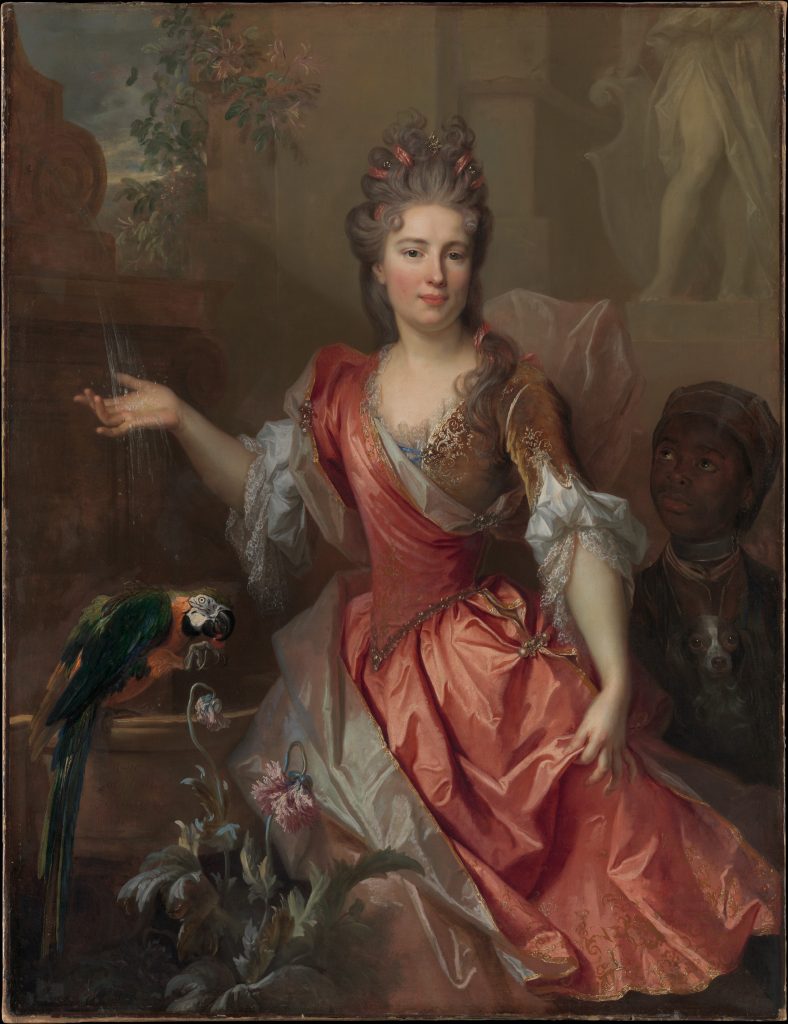Part 6: Conference Sessions
October 22: 12:45-13:45 Session: Teaching Session
12:45-13:45 Séance Pédagogique / Teaching Session
Présidence/Chair : Elizabeth Giltner (University of Central Florida)

Ashley M. WILLIARD (U. of South Carolina). « What does it mean to teach French slavery on a campus built by enslaved people? »
Teaching new perspectives on the seventeenth century requires deep engagement with ethical questions. In this presentation, I discuss my experience teaching an undergraduate course on the history and memory of slavery in the French-speaking world. I first taught the class in 2018 and will be teaching an updated version this fall. The course begins with a historical unit, focused on readings of primary sources from the seventeenth and eighteenth centuries. For the second unit, we read two novels that revisit the memory of slavery: Maryse Condé’s Moi, Tituba, sorcière Noire de Salem… and Patrick Chamoiseau’s L’esclave vieil homme et le molosse. For the final unit, we focus on other cultural productions that reframe the history of slavery, such as television shows, movies, museums, and public monuments. The course also involves reflections on South Carolina’s history, particularly debates about building names and confederate monuments. The presentation will focus on the challenging questions I have confronted in designing and teaching this course. How do we set up students to read racist historical texts? What tools can help students productively confront violent representations? How do they read resistance in this material? What texts are worth the risk of traumatic content? How do we guide their discussions of triggering material? How do we help them make connections to local history and current events without conflating distinct contexts? Perhaps most importantly, how can we learn from students in this process?
Heather KIRK (Brescia University College). « Podcasting the Grand Siècle: An Assignment for the Virtual and Physical Classrooms. »
Au XVIIe siècle les enjeux du portrait acquièrent des dimensions non seulement littéraires, mais aussi sociales et politiques. Le portrait mondain, dont la mode se diffuse dans la seconde moitié du siècle, se configure comme la forme par excellence des représentations de soi dans l’espace littéraire et social, particulièrement parmi les élites. L’apogée de la mode en 1659 voit la publication de trois ouvrages dédiés au portrait : les Divers portraits ; le Recueil des portraits et éloges et la Description de l’isle de portraiture. Si ses contemporains et critiques la considèrent déjà dépassée en 1661 (Somaize, Dictionnaire des précieuses), cette mode finit cependant par changer l’histoire littéraire. Mon étude sur le portrait se place dans le sillon tracé par les travaux sur le portrait (Plantié 1994, Morlet-Chantalat 1994, Spica 2002, Harvey 2013, Schuwey 2020) et démontre non seulement qu’avant la mode du portrait mondain les descriptions des personnages fictionnels n’étaient pas appelées ‘portraits’, mais aussi que la fonction du portrait dans l’espace littéraire change radicalement dans la période 1660-1700. Cette métamorphose a lieu grâce aux ouvrages de fiction qui empruntent ce genre mondain et le façonnent pour l’adapter aux nécessités narratives du temps. Se délivrant du carcan descriptif baroque, le portrait, vers la fin du siècle, en vient à jouer une fonction proleptique au sein de la narration. Mon étude de cas portera sur les stratégies représentatives mises en place par Fénelon dans le Télémaque (1699), où, afin d’enseigner à son disciple, le Duc de Bourgogne, à distinguer les courtisans fiables des courtisans déloyaux, il transforme le portrait en un outil didactique et épistémologique.
Charlotte DANIELS (Bowdoin College). « Reframing Blackness in Classic French Texts: The Case of Marivaux’s L’Île des esclaves. »
Despite its title, L’île des esclaves, most critics have read Marivaux’s play as being about “masters” and “servants” rather than “masters” and “slaves.” But this often-taught work participates in the creation of a discourse of race emerging in parallel with a global system of commerce that depended for its very existence on chattel slavery. Arlequin’s gluttony, drunkenness, and silly amorous efforts are all traditionally associated with the valet role in the commedia dell’arte. However, in this play, these characteristics crystalize into a modern potent and complex stereotype that, thanks to Arlequin’s full-face mask, becomes inseparable from Blackness.

